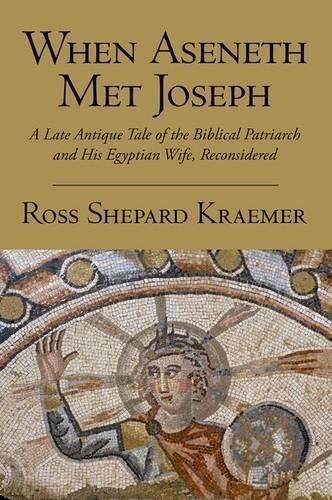Readings Newsletter
Become a Readings Member to make your shopping experience even easier.
Sign in or sign up for free!
You’re not far away from qualifying for FREE standard shipping within Australia
You’ve qualified for FREE standard shipping within Australia
The cart is loading…






This is the study of an anonymous ancient work, usually called Joseph and Aseneth, which narrates the transformation of the daughter of an Egyptian priest into an acceptable spouse for the biblical Joseph, whose marriage to Aseneth is given brief notice in Genesis. Kraemer takes issue with the scholarly consensus that the tale is a Jewish conversion story composed no later than the early second century C.E. Instead, she dates it to the third or fourth century C.E., and argues that, although no definitive answer is presently possible, it may well be a Christian account. This critique also raises larger issues about the dating and identification of many similar writings, known as pseudepigrapha. Kraemer reads its account of Aseneth’s interactions with an angelic double of Joseph in the context of ancient accounts of encounters with powerful divine beings, including the sun god Helios, and of Neoplatonic ideas about the fate of souls. When Aseneth Met Joseph demonstrates the centrality of ideas about gender in the representation of Aseneth and, by extension, offers implications for broader concerns about gender in Late Antiquity.
$9.00 standard shipping within Australia
FREE standard shipping within Australia for orders over $100.00
Express & International shipping calculated at checkout
This is the study of an anonymous ancient work, usually called Joseph and Aseneth, which narrates the transformation of the daughter of an Egyptian priest into an acceptable spouse for the biblical Joseph, whose marriage to Aseneth is given brief notice in Genesis. Kraemer takes issue with the scholarly consensus that the tale is a Jewish conversion story composed no later than the early second century C.E. Instead, she dates it to the third or fourth century C.E., and argues that, although no definitive answer is presently possible, it may well be a Christian account. This critique also raises larger issues about the dating and identification of many similar writings, known as pseudepigrapha. Kraemer reads its account of Aseneth’s interactions with an angelic double of Joseph in the context of ancient accounts of encounters with powerful divine beings, including the sun god Helios, and of Neoplatonic ideas about the fate of souls. When Aseneth Met Joseph demonstrates the centrality of ideas about gender in the representation of Aseneth and, by extension, offers implications for broader concerns about gender in Late Antiquity.